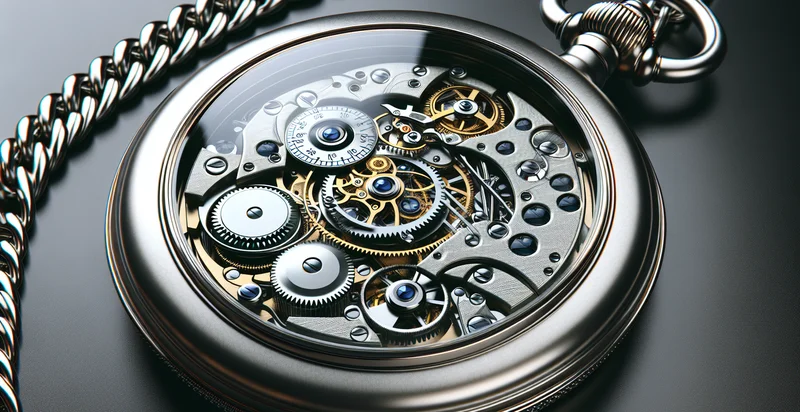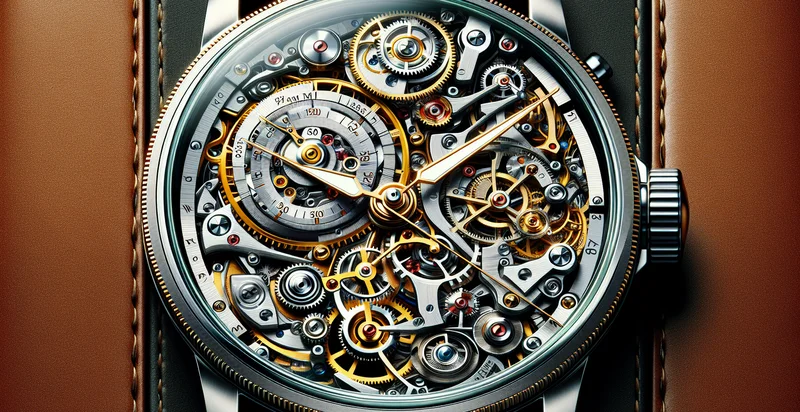Identify what material a pocket watch is made from
using AI
Below is a free classifier to identify what material a pocket watch is made from. Just upload your image, and our AI will predict what material a pocket watch is made from - in just seconds.

Contact us for API access
Or, use Nyckel to build highly-accurate custom classifiers in just minutes. No PhD required.
Get started
import nyckel
credentials = nyckel.Credentials("YOUR_CLIENT_ID", "YOUR_CLIENT_SECRET")
nyckel.invoke("what-material-a-pocket-watch-is-made-from", "your_image_url", credentials)
fetch('https://www.nyckel.com/v1/functions/what-material-a-pocket-watch-is-made-from/invoke', {
method: 'POST',
headers: {
'Authorization': 'Bearer ' + 'YOUR_BEARER_TOKEN',
'Content-Type': 'application/json',
},
body: JSON.stringify(
{"data": "your_image_url"}
)
})
.then(response => response.json())
.then(data => console.log(data));
curl -X POST \
-H "Content-Type: application/json" \
-H "Authorization: Bearer YOUR_BEARER_TOKEN" \
-d '{"data": "your_image_url"}' \
https://www.nyckel.com/v1/functions/what-material-a-pocket-watch-is-made-from/invoke
How this classifier works
To start, upload your image. Our AI tool will then predict what material a pocket watch is made from.
This pretrained image model uses a Nyckel-created dataset and has 16 labels, including Alloy, Brass, Bronze, Ceramic, Copper, Gemstone, Gold, Leather, Metal and Plastic.
We'll also show a confidence score (the higher the number, the more confident the AI model is around what material a pocket watch is made from).
Whether you're just curious or building what material a pocket watch is made from detection into your application, we hope our classifier proves helpful.
Related Classifiers
Need to identify what material a pocket watch is made from at scale?
Get API or Zapier access to this classifier for free. It's perfect for:
- Quality Assessment for Retailers: Retailers can use the false image classification function to verify the materials of pocket watches before purchasing inventory. This ensures that they maintain high standards and only sell authentic products to customers, reducing the risk of fraud.
- Insurance Appraisal: Insurance companies can employ this function to accurately assess the value of pocket watches made from different materials. By identifying the material, they can provide appropriate coverage and premiums, ensuring clients have the right level of protection.
- Restoration Services: Watch restoration businesses can leverage this classification tool to determine the original material of antique pocket watches. This information helps restorers use compatible materials for repairs, preserving the watch's historical integrity.
- Market Analysis: Market analysts can analyze trends in pocket watch materials using the classification function. This information can inform manufacturers about consumer preferences and guide them in developing products that align with market demand.
- Authentication for Collectors: Collectors can use the function as a verification tool to ensure the authenticity of their pocket watches. Knowing the material can help them discern genuine pieces from replicas or counterfeit items, preserving their collection's value.
- Custom Product Design: Jewelry designers can use the classification function to gain insights into the types of materials preferred by clients for custom pocket watch designs. This can enhance client satisfaction through tailored designs that resonate with current trends.
- Educational Purposes: Educational institutions can incorporate the function into their curriculum, teaching students about watchmaking and materials science. This hands-on experience can enhance their understanding of craftsmanship and historical significance in horology.


